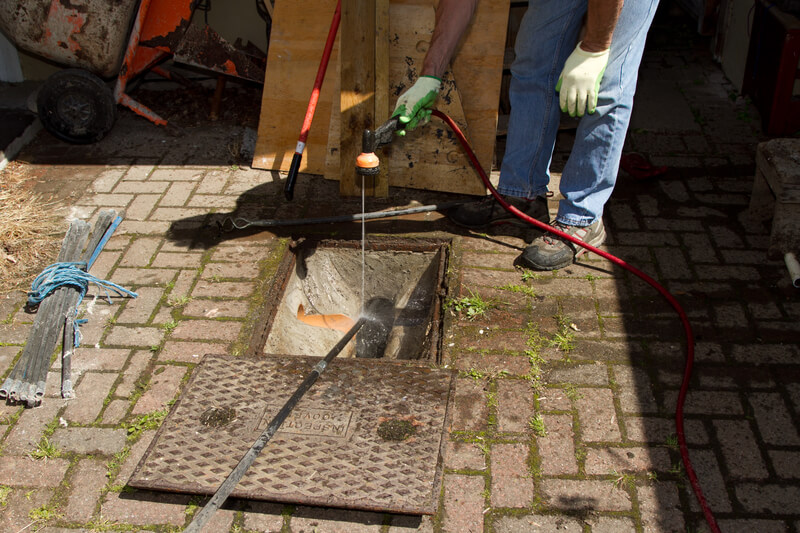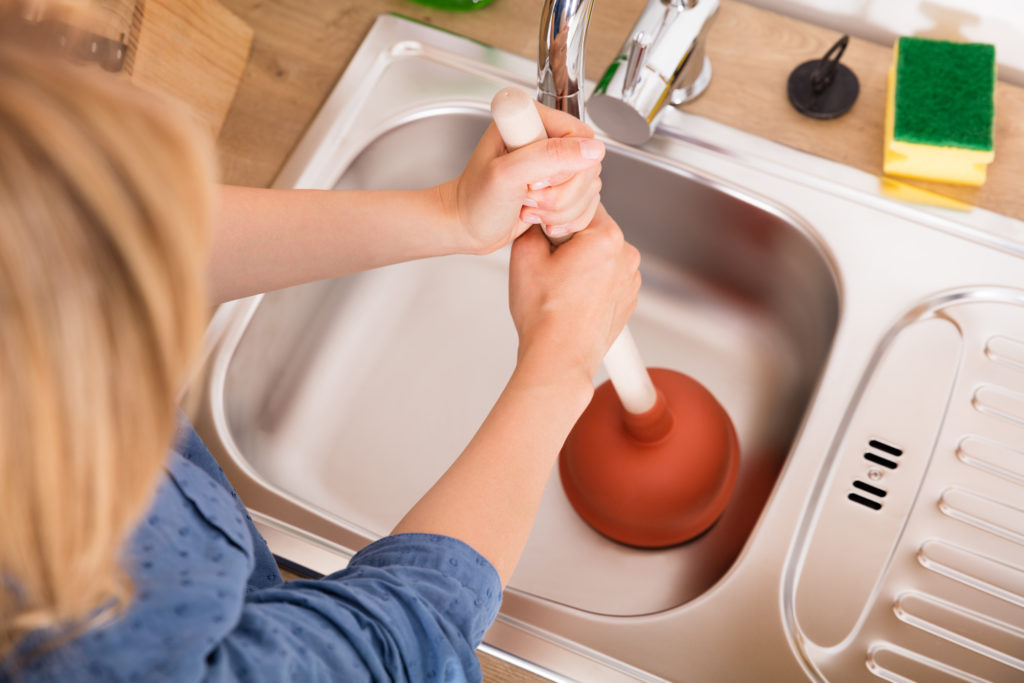Were you trying to find information and facts around 8 Tips For Clearing A Blocked Drain?

Intro
Taking care of an obstructed drainpipe can be an aggravating experience, interfering with day-to-day activities and potentially triggering damage to your building. Nonetheless, prior to connecting to pipes experts, there are actions you can require to attend to the concern yourself. In this guide, we'll discover do it yourself solutions and safety nets to tackle a blocked drainpipe properly.
Recognizing the Concern
The initial step in resolving a blocked drainpipe is recognizing the signs. Slow drainage, gurgling audios, foul odors originating from drains pipes, or water backing up are common indicators of an obstructed drain. Determining these signs early can help stop better complications.
Typical Sources Of Blocked Drainpipes
Recognizing the elements that add to drain blockages is vital for efficient resolution. Typical culprits consist of hair, soap scum, grease, food debris, and international objects like hygienic items or paper towels. Tree origins getting into below ground pipes can likewise create significant clogs.
Do it yourself Solutions
For minor blockages, several do it yourself remedies can be efficient. Pouring boiling thin down the drain can aid dissolve oil and debris. Baking soda and vinegar or a mixture of salt and baking soda can act as natural cleansers. Using a bettor or pipes serpent to dislodge blockages is another choice.
Tools and Tools
Having the right tools available can make DIY drain cleansing more efficient. A plunger is a versatile tool for removing clogs in sinks, toilets, and showers. A plumbing serpent or auger can reach deeper obstructions, while drain cleaning chemicals can be utilized cautiously for stubborn clogs.
Preventive Measures
To avoid future blockages, adopting preventive measures is important. Mount drain guards or filters to catch hair and particles prior to they go into the pipes. Frequently flush drains with warm water to dissolve grease accumulation, and avoid throwing away oil or solid waste down the drain.
When to Call a Professional
While DIY solutions can deal with small clogs, specific indications show the requirement for specialist assistance. Relentless blockages, foul odors in spite of cleaning up initiatives, or numerous drains pipes backing up simultaneously are warnings that warrant professional treatment.
Choosing the Right Plumbing Solution
When selecting a pipes solution, take into consideration factors such as experience, licensing, and consumer reviews. Choose a trustworthy plumber with a performance history of quality handiwork and transparent rates techniques.
Cost Factors to consider
The price of expert drainpipe cleaning company can vary relying on the intensity of the clog and the plumbing technician's prices. Demand quotes from multiple service providers and ask about any service charges to make certain openness and prevent shocks.
Security Precautions
When trying do it yourself drain cleansing, prioritize safety and security. Put on protective handwear covers and eyewear to avoid contact with harmful chemicals or microorganisms. Never ever blend different drainpipe cleansing items, as this can create hazardous fumes.
Instance Researches
Real-life examples illustrate the performance of do it yourself remedies and the relevance of prompt expert treatment in dealing with drainpipe clogs.
Conclusion
By following the pointers described in this guide, you can efficiently tackle obstructed drains pipes and protect against future pipes concerns. Whether selecting do it yourself options or seeking specialist help, prompt action is vital to preserving a healthy and balanced plumbing system and preserving the integrity of your home.
How to Clear a Clogged Drain Yourself (And When to Call In the Professionals)
What Can Clog a Drain
Dirt Skin flakes Hair Grease Soap scum Food Offset pipes Tree roots Small objects Mineral buildup DIY Tricks to Unclog a Drain
You can fix this! Once you have identified the source of the clog (or have a vague idea), you can try one or a combination of these fixes in order to clear your plumbing.
Wire Hanger or Snake
Untangle and clear out hair from a drainpipe with a homemade snake. Use a straightened-out wire hanger with a 90-degree angle hook to locate the clog and drag out any unwanted material.
Remember not to push the clog further down to where the wire hanger cannot reach! If you need to follow up with a plunger, give it a try. Your efforts might be more successful after it’s been wire-snaked.
If you want to get fancy and don’t have a wire hanger to spare, head to the store and pick up a hand-operated drain snake. You can get one for $10-$30. It may save you the hassle, and provide additional length to reach deep into the clogged pipe.
Plunger
A cup plunger has a suction cup attached to a wooden handle. The rubber creates a seal around the drain, and increases the pressure force of the plunger.
Plunge for 30-second increments to loosen the clog. This may need to be repeated over the course of 15-20 minutes. Once plunged, run the water to flush the remaining material out of the drain.
Remember– never use a plunger if you have used a chemical drain cleaner. These chemicals can splash up from the force of the plunger and cause serious injury or burns.
Boiling Water
Hot water can sometimes break up materials into a flushable amount. Dirt, grease, and soap buildup requires heat in order to unstick from surfaces.
Take your kitchen kettle and heat your water to a boil. Once it reaches a rolling boil, pour it directly down the drain into the blockage. Carefully follow with plunging, if necessary.
Don’t worry if this takes more than one try! It can often take multiple kettles and repeated plunging in order to clear a particularly stubborn clog.
Chemical Drain Cleaner
As a last resort, pick up a bottle of chemical drain cleaner. Drain-cleaning chemicals are potent, and not very good for the environment.
You may need to wear protective eyewear in gloves before handling your bottle of chemical drain cleaner. Follow the instructions printed on the bottle, and flush with water as soon as the instructions allow. Do not follow with plunging.
Baking Soda and Vinegar
As a safer alternative to chemical drain cleaner, baking soda and vinegar can create a chemical reaction that clears tough clogs.
Combine one cup of cleaning vinegar with one cup of boiling water, and set aside. Once you have done this, pour half a cup of baking soda down the drain. Give the baking thirty seconds to settle and cover a large portion of the problem drain.
Following the baking soda, pour down your vinegar and hot water solution. Once the vinegar and baking soda combine, the mixture will bubble and fix. Let this reaction fizzle in the drain for about an hour.
After an hour, follow with a kettle’s worth of hot water. The heat and liquid should flush out any remaining material.
When to Call a Plumber
If your DIY attempts haven’t cleared your clog drain, it’s time to call in a professional. It’s not worth losing access to your kitchen sink or high-traffic bathroom. A clog in a vital area can keep you from the things you’d rather be doing, and derail your routine.
Anytime a clog is causing water to spread is a time to call in a plumbing service. What starts out as a little bit of water can quickly grow into serious, expensive water damage.
Additionally, a serious clog can result in burst pipes or serious leaks. Make sure you know when to take it seriously!
https://myguysnow.com/how-to-clear-a-clogged-drain-yourself-and-when-to-call-in-the-professionals/

I am just very drawn to Tips for Dealing with Clogged Drains and Sewer Lines and I hope you appreciated the entire blog entry. Do you know another individual who is in to the topic? Why not share it. I recognize the value of reading our article about Some easy tips to fix blocked drains.
Click Here